Augmented and Virtual Reality in Libraries
LIBRARY INFORMATION TECHNOLOGY ASSOCIATION (LITA) GUIDES
Marta Mestrovic Deyrup, Ph.D.
Acquisitions Editor, Library Information and Technology Association, a division of the American Library Association
The Library Information Technology Association (LITA) Guides provide information and guidance on topics related to cutting-edge technology for library and IT specialists.
Written by top professionals in the field of technology, the guides are sought after by librarians wishing to learn a new skill or to become current in todays best practices.
Each book in the series has been overseen editorially since conception by LITA and reviewed by LITA members with special expertise in the specialty area of the book.
Established in 1966, LITA is the division of the American Library Association (ALA) that provides its members and the library and information science community as a whole with a forum for discussion, an environment for learning, and a program for actions on the design, development, and implementation of automated and technological systems in the library and information science field.
Approximately 25 LITA Guides were published by Neal-Schuman and ALA between 2007 and 2015. Rowman & Littlefield took over publication of the series beginning in late 2015. Books in the series published by Rowman & Littlefield are:
Digitizing Flat Media: Principles and Practices
The Librarians Introduction to Programming Languages
Library Service Design: A LITA Guide to Holistic Assessment, Insight, and Improvement
Data Visualization: A Guide to Visual Storytelling for Librarians
Mobile Technologies in Libraries: A LITA Guide
Innovative LibGuides Applications
Integrating LibGuides into Library Websites
Protecting Patron Privacy: A LITA Guide
The LITA Leadership Guide: The Librarian as Entrepreneur, Leader, and Technologist
Using Social Media to Build Library Communities: A LITA Guide
Managing Library Technology: A LITA Guide
The LITA Guide to No- or Low-Cost Technology Tools for Libraries
Big Data Shocks: An Introduction to Big Data for Librarians and Information Professionals
The Savvy Academic Librarians Guide to Technology Innovation: Moving Beyond the Wow Factor
The LITA Guide to Augmented Reality in Libraries
Augmented and Virtual Reality in Libraries
Edited by Jolanda-Pieta van Arnhem
Christine Elliott
Marie Rose
Rowman & Littlefield
Lanham Boulder New York London
Published by Rowman & Littlefield
A wholly owned subsidiary of The Rowman & Littlefield Publishing Group, Inc.
4501 Forbes Boulevard, Suite 200, Lanham, Maryland 20706
www.rowman.com
Unit A, Whitacre Mews, 26-34 Stannary Street, London SE11 4AB
Copyright 2018 by American Library Association
All rights reserved . No part of this book may be reproduced in any form or by any electronic or mechanical means, including information storage and retrieval systems, without written permission from the publisher, except by a reviewer who may quote passages in a review.
British Library Cataloguing in Publication Information Available
Library of Congress Cataloging-in-Publication Data
LCCN 2018001263 | ISBN 9781538102909 (cloth: alk. paper) | ISBN 9781538102916 (pbk. : alk. paper) | ISBN 9781538102923 (electronic)
 The paper used in this publication meets the minimum requirements of American National Standard for Information SciencesPermanence of Paper for Printed Library Materials, ANSI/NISO Z39.48-1992.
The paper used in this publication meets the minimum requirements of American National Standard for Information SciencesPermanence of Paper for Printed Library Materials, ANSI/NISO Z39.48-1992.
Printed in the United States of America
Preface
I t is our opinion that libraries, archives, and museums are pretty good at what they do in the real, tangible world we all occupy. It is the intention of this book to expose those same institutions, and professionals within them, to the new world of augmented and virtual reality (AR/VR). In particular, this book is geared toward librarians, archivists, and other information professionals who are looking for inexpensive and nontechnical ways to incorporate AR/VR into their already existing endeavors. Some of the efforts explored in this guide include programming, instruction, information literacy, collections management, curation, and other initiatives.
While there is a healthy amount of literature written about AR/VR in general, this book covers new ground in that not a lot has been written about AR/VR in relation to libraries, archives, and museums. Starting in the introductory chapter, this book will identify what literature there is, and continue to build on that knowledge base throughout each chapter. It is our hope that the content within will provide a new perspective for those already familiar with AR/VR, as well as introduce AR/VR to those who have not explored its possibilities.
This book is divided into two main sections. Part I will introduce what augmented and virtual reality is, and provide a brief history, mostly because its history is brief. This section of the book will also introduce readers to some of the terminology surrounding this technology, as well as the hardware and software available at the time this guide was published. It will be no surprise to readers to find that the technical and social landscape of AR/VR is rapidly changing, with new innovations and incorporations occurring daily. Readers will also be made aware of possible accessibility challenges that will surface when utilizing these technologies and user-centered pedagogies. Because of the nearly daily evolution of AR/VR, new publications will continue to surface after the publication of this book, with its focus on accessibility. Some of the chapters in this book mention challenges related to location, user abilities or disabilities, technology, and other situations. For further studies on AR/VR, we recommend that readers explore the vast amount of literature referenced in each chapters bibliography.
Part II will present a variety of case studies in which libraries and archives have implemented AR/VR into their institutional efforts. In Augmenting Orientation, Hornick and Wade discuss the ways they used free AR/VR apps to introduce their new students to library services. For inspiration on incorporating augmentation into library instruction efforts, ODell and Gutierrez describe how the free application Blippar affected instruction at Emporia State University in Blipping through Information Literacy. In the amusingly titled Gotta Catch em All, Smith and Hottinger also wanted their orientation to appeal to new students, so they created a scavenger hunt using the free app Aurasma. Ovens and Mills describe how their digital media can still provide a multisensory experience for patrons in That E-book Smell. Sutherland describes the basics of how to use AR for wayfinding purposes in Wayfinding Narratives.
Two case studies follow the work of archivists and their incorporation of AR/VR. In Augmented Archives, Calloway and Bishop discuss how Washington College Archives incorporated student work to increase visitor access to primary materials. Hibbert, Christa, Seeley, and Lees Dance Magic Dance case study incorporated both AR elements and 360 Video hardware and software to enable patrons to be immersed in various dances held in their video archives through the use of headsets.
360-degree video applications and hardware are increasingly being used in conjunction with AR/VR initiatives to incorporate numerous senses when interacting with materials. In VR, AR, and Video 360 Miltenoff outlines how St. Cloud State University uses both Video 360 and an augmented reality game to engage students during orientation and instruction. Moore and McAvoy utilized Video 360 in their Ethnic Studies 120 course to enable students to experience the stories of others in Teaching through Experiencing.
Next page
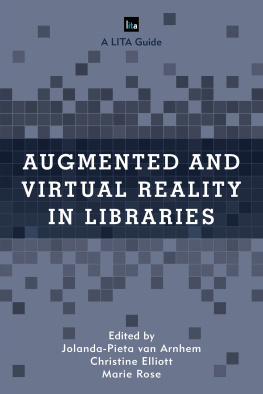



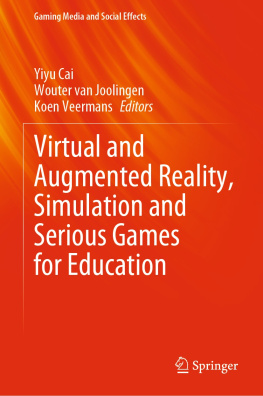
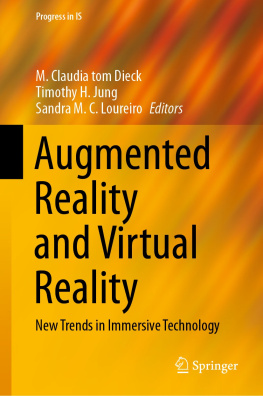
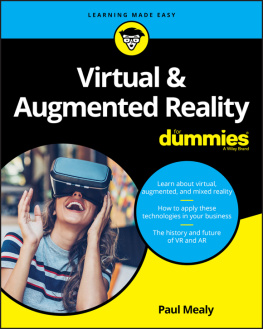
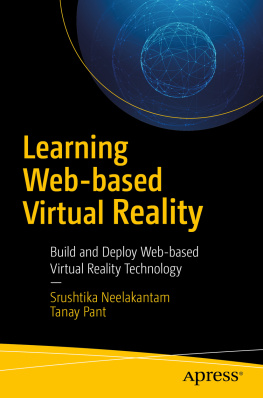
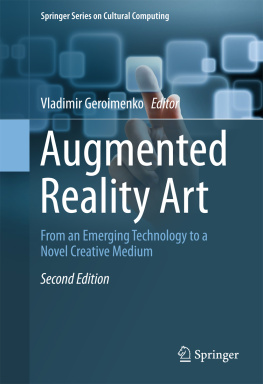

 The paper used in this publication meets the minimum requirements of American National Standard for Information SciencesPermanence of Paper for Printed Library Materials, ANSI/NISO Z39.48-1992.
The paper used in this publication meets the minimum requirements of American National Standard for Information SciencesPermanence of Paper for Printed Library Materials, ANSI/NISO Z39.48-1992.